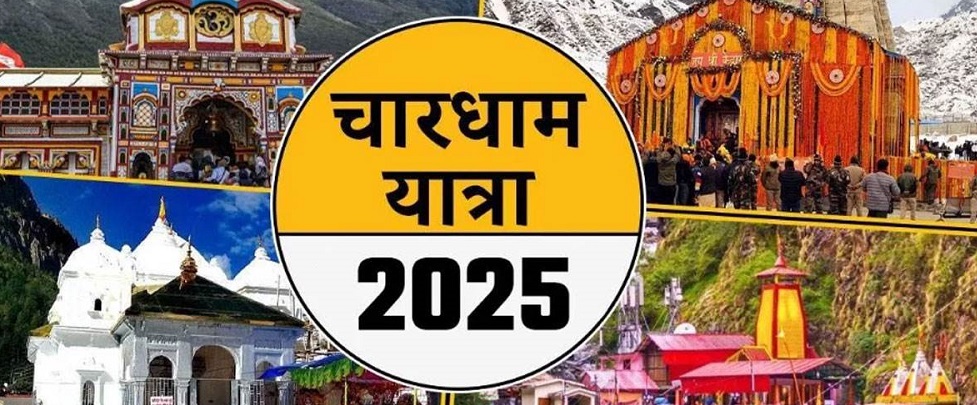The Char Dham Yatra is considered one of the most venerated pilgrimage routes in Hinduism, attracting countless worshippers annually to the stunning Garhwal region of the Himalayas in Uttarakhand. This sacred journey includes four highly esteemed temples: Yamunotri, Gangotri, Kedarnath, and Badrinath. Each shrine is steeped in ancient legends and is thought to provide spiritual cleansing and liberation to its visitors.
• Yamunotri marks the source of the Yamuna River and is revered as the Goddess Yamuna
• Gangotri is the origin of the Ganges, worshipped as Goddess Ganga
• Kedarnath is a distinguished Jyotirlinga dedicated to Lord Shiva
• Badrinath is devoted to Lord Vishnu, standing as one of the most significant Vaishnavite temples.
As the 2025 Char Dham Yatra has begun, enhanced infrastructure and improved road connectivity are expected to ease the pilgrimage for thousands. However, due to the challenging terrain and high-altitude conditions, understanding the Char Dham Yatra route map is essential for a smooth and safe journey. This blog provides a comprehensive guide to the route, helping you navigate the spiritual path with clarity and devotion.
Char Dham Yatra 2025 Route Map Overview
The traditional route of the Char Dham Yatra begins from Haridwar or Dehradun, which serve as base locations for pilgrims. Many travel operators provide well-arranged Char Dham Tour Packages specifically designed to match the latest routes and travel conditions for those in search of structured itineraries. Understanding the route helps pilgrims decide whether they want to go independently or choose such packages for convenience.
From here, the journey proceeds in the following order:
1. Yamunotri
2. Gangotri
3. Kedarnath
4. Badrinath
This route is considered spiritually aligned and logistically practical, with the pilgrimage moving from west to east. Typically, the full Yatra takes around 10 to 14 days, depending on pace and weather.
Detailed Route to Each Dham
Yamunotri Route
The Yatra begins at Haridwar/Rishikesh, proceeding toward Barkot via Dehradun or Mussoorie. From Barkot, pilgrims drive to Janki Chatti, the last motorable point.
• Key halts: Barkot, Hanuman Chatti, Janki Chatti
• Trek: 6 km from Janki Chatti to the Yamunotri shrine
Gangotri Route
From Yamunotri, the route continues to Uttarkashi, followed by a drive to Gangotri.
• Key halts: Barkot → Uttarkashi → Harshil → Gangotri
• The shrine is accessible by road, making it the easiest to reach among the four.
Kedarnath Route
Pilgrims head to Guptkashi or Sonprayag, then proceed to Gaurikund, the base for the Kedarnath trek.
• Road access: Up to Gaurikund
• Trek: 16-18 km uphill from Gaurikund to Kedarnath Temple
• Helicopter: Available from Phata, Sersi, or Guptkashi (subject to availability)
Badrinath Route
The final destination, Badrinath, is reached via Joshimath from Kedarnath.
• Key stops: Guptkashi → Chamoli → Joshimath → Badrinath
• The road is well-maintained with scenic alpine views.
Transportation and Connectivity
To begin the Char Dham Yatra, pilgrims can reach Haridwar, Rishikesh, or Dehradun through various modes:
• By Air: Jolly Grant Airport (Dehradun) is the nearest airport.
• By Rail: Haridwar and Rishikesh have good rail connectivity with major cities.
• By Road: National highways and state buses connect the region to Delhi, Chandigarh, and other major northern cities.
From these points, yatris use buses or private vehicles to proceed toward the Char Dham route.
Environmental and Road Conditions to Expect during Yatra
The Char Dham Yatra route is set amidst the rugged Himalayan terrain, with steep climbs, river crossings, and narrow mountain roads. Pilgrims should be prepared for variable conditions, including landslides, sharp curves, and high-altitude weather.
For 2025, several infrastructure upgrades are underway to enhance road safety and accessibility:
• All-weather roads and tunnel projects are nearing completion
• Improved signage and safety barriers along high-risk zones
• Enhanced emergency response setups in landslide-prone areas
The weather at such high altitudes can be unpredictable. While May and June are ideal for travel, the monsoon season (July-August) brings heavy rainfall and road disruptions. Post-monsoon travel in September and October offers clearer skies. No matter how you travel, the sacred path of the Char Dham Yatra is sure to leave you with memories and blessings that last a lifetime.


